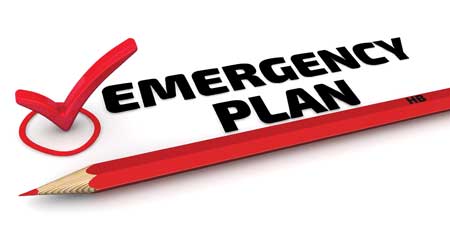Specific Steps for Drafting Emergency Operating Procedures
Begin with higher critical systems and equipment. Identify high-priority functions. And then begin drafting your plans according to these five steps.
Developing emergency operating procedures (EOPs) can be rather daunting, especially for critical environments and large portfolios. However, as with any program improvement of this magnitude, the key is to make a plan and start.
In the case of EOPs, begin with higher criticality systems and equipment. To do such, you must first identify high priority functions and areas at the facility. This is often defined in the organizational disaster recovery documents. Then, determine the facility systems that support these areas and functions.
The normal and emergency operations of the identified system must be thoroughly understood, necessitating the review of building one-line diagrams and sequence of operations. Note redundancies and system interdependencies.
Next, conduct a high-level failure modes and effects analysis (FMEA) to discern system vulnerabilities and impacts of various scenario events (e.g. loss of utilities or equipment failure).
Then, craft a response for such scenarios. For example, in the event of a power sag, the EOP provides a checklist for staff to verify that all critical equipment is operating normally. Should a piece of equipment go offline or not ride through the “bump,” staff would have to execute equipment specific EOP for manually starting the offline equipment.
Taking this further, consider the response to a power outage. A separate EOP for power outage is followed by staff to ensure all critical loads transferred to emergency/backup power sources. If the generator failed to start, then staff would perform the EOP for manual start and transfer of power to generator.
5 steps to drafting
When drafting EOPs, follow the below approach to ensure staff are safe and risks to occupants and building function are reduced.
1. Assess – Simply stated, determine what is happening. Various inputs to this assessment include alarms, customer phone calls, and general rounds. Specific applicable inputs can be listed in the EOP or used to define when a particular EOP is executed.
2. Safety – Before entering any space, staff must make sure it is safe to do so. Thus, an EOP should include items to check before executing the subsequent steps, pointing out items to observe during the procedure. Backout steps may be included in the EOP as well.
3. Contain/Isolate – During an event or failure, staff must first contain the damage or impact to the immediately affected space or function. The intent is to mitigate collateral damage and increased risk, at least that which can be reduced in a timely fashion. Ideally, the failed equipment is isolated from the system so that is not immediately impeding or impacting business or safety.
4. Bypass/Backup – Next, staff attempts to bypass the failed equipment and/or support the business function by transferring load to backup/redundant equipment.
5. Repair/Restore – Lastly, while EOPs cannot detail the tasks needed to repair equipment, steps listed to return to normal operations can be provided, or the related MOP may be referenced. The system should be closely monitored until normal operations return.
Once an EOP is drafted, it should be reviewed and approved by at least another technical expert. Ideally, the EOP is field tested; however, this is often unrealistic for occupied buildings. EOPs can be tested during building shutdowns or as part of retro-commissioning/ re-commissioning. All efforts should be made to draft EOPs during construction/build-outs so they can be tested during original commissioning.
After the EOP is approved, following the process defined in an SOP, relevant facility staff must be trained on it. The EOP should be stored electronically in a central repository easily accessible by staff (e.g. CMMS) and current paper copies maintained in a central binder. If possible, field copies should be posted at equipment (if in a secured location) for quick access.
All SOPs, MOPs, and EOPs should be reviewed annually by the respective document owner to ensure the procedure is still applicable and accurate. Any edits must be made following the document management process.
All relevant facility staff should train annually on the documents. SOPs, MOPs, and EOPs should be part of new team member on-boarding as well.
EOPs should be incorporated into routine emergency drills to ensure availability, accuracy, and staff awareness.
John Rimer (john@fm360consulting.com), CFM, is president of FM360, LLC. In more than 20 years of facility management experience, he has implemented and managed facility programs for companies such as Intel, Microsoft, JP Morgan Chase, and Charles Schwab.
Related Topics:













